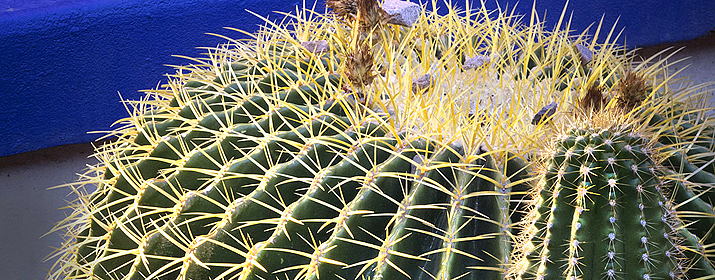

They’re sentinels of the desert – tall, narrow saguaro cacti that grow throughout the Tucson Electric Power service territory.
Our Land Resources team takes great care to protect and salvage a wide variety of cacti, including saguaros, barrel cacti, ocotillos and less-common species such as queen of the night.
“We believe in preserving and protecting sensitive natural resources in our unique environment,” said Shannon Breslin, TEP Manager of Land Resources. “Compliance with the law is imperative. TEP strives to be a good neighbor, community steward and role model. We routinely seek cost-effective project solutions that achieve more than what regulations require.”
Land Resources has collaborated with the Tucson Cactus & Succulent Society, or TCSS, on several projects dating back to the construction of TEP’s Cienega Substation about five years ago. During that project, several cacti were moved and others were protected under the watchful eye of an environmental consultant.
A couple of years later, during construction of the Tortolita to North Loop 138-kilovolt transmission line, Land Resources again worked with TCSS to salvage hundreds of cacti along the 15-mile route – some of which were purchased by Pima County and planted downtown around the Pima County Courthouse.
In February, Leslie Carpenter, TEP Environmental & Land Use Planner II, and TCSS representatives salvaged about 40 barrel cacti, 15 ocotillos and 10 rare queen of the night plants (which bloom just once per year) from the northeast side of the TEP Irvington campus. A seven-acre plot on the property is being developed into a new Warehouse storage yard.
Some of the cacti were taken to Pima Prickly Park, a public research and education desert garden facility, some were taken to the Pima County Nursery for eventual replanting in the community and some were replanted in landscaping strips on the Irvington campus. The queen of the night went to the Krutch Garden on the University of Arizona campus.
“The goal is to keep the plants alive and have them be successful somewhere else,” Carpenter said. “If we can replant them in the Tucson basin, we give them a chance to bloom and provide a habitat or animals such as the endangered lesser long-nosed bat and cavity-nesting birds.”
In the future, cacti will be salvaged along a new 41-mile Pinal Central to Tortolita 500-kilovolt line in Pinal County. Construction starts in 2015, but “we’re already starting to look at what plants can be salvaged,” Breslin said.
TCSS, which started its Cactus Rescue Crew Program in 1999, has saved more than 66,000 cacti and logged more than 23,000 volunteer hours. About 175 TCSS crew members participate in one or more cacti “rescues” each year.
“They’re always pleasantly surprised that TEP has this high a level of environmental awareness,” Breslin said about the TCSS crew members. “The success of each of these rescue efforts demonstrates how TEP is committed to the customers we serve and to the sensitive resources where we live.”






